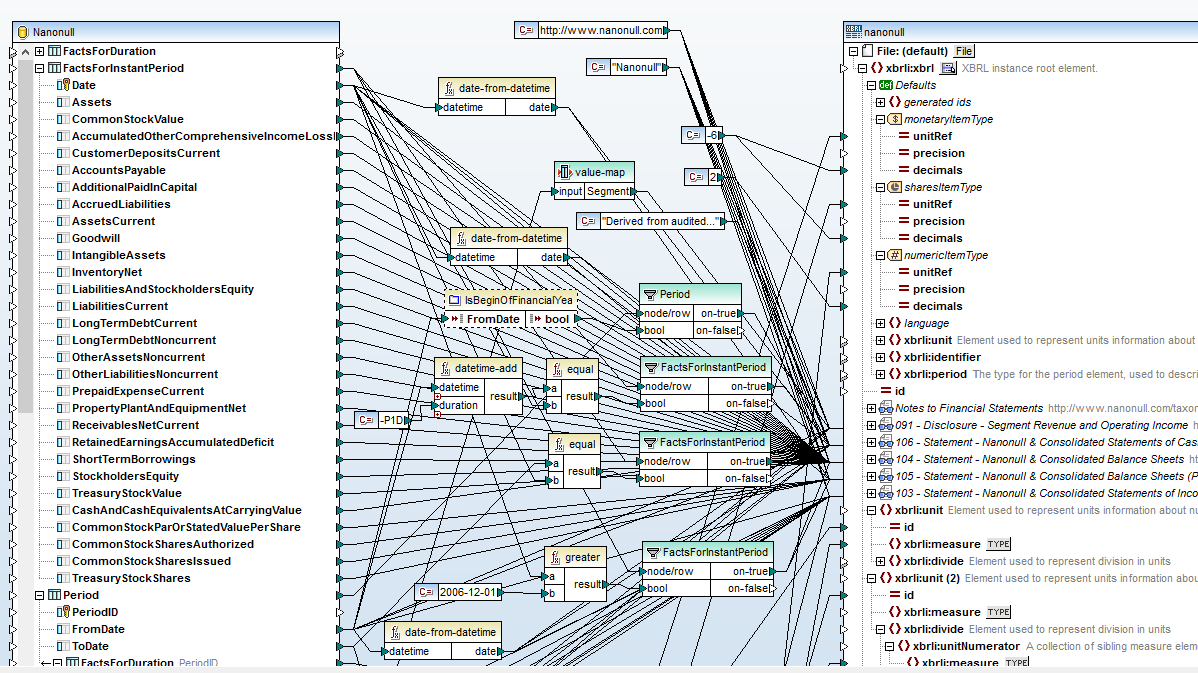
Altova MapForce offers a comprehensive and user-friendly solution for XBRL mapping, conversion, and transformation. This affordable data integration and ETL tool empowers organizations to efficiently manage and transform XBRL data as part of their reporting and compliance processes.
Since financial data is most often stored in backend systems such as relational databases, it’s useful to convert that data directly to valid XBRL instance documents for submission. Using MapForce, you can map database or other data to the relevant XBRL Taxonomy for instance generation. This makes public financial data submission a repeatable and highly manageable process, allowing you to produce valid XBRL reports as required based on the variable data stored in accounting system fields.
Similarly, you can write XBRL data to backend databases and other sources such as XML, JSON, and Excel for integration with other systems or in-depth analysis.
